#non-libidoist
Explore tagged Tumblr posts
Text
A fun little divider I made for myself :)

These are the Aroace and Non-Libidoism flags ^^
I also made a gif version:

Feel free to use if you want!
(What other flags should I make dividers for?)
#aroace#non-libidoist#aroace flag#dividers#free to use#aroace pride#pixel art#aroace artist#my art#parker’s art#pixel#pixelated#pixel aesthetic#asexual#aromantic#aspec#aromantic asexual#arospec#ace pride#aro ace#aro pride#non-libidoism
31 notes
·
View notes
Text
Asexuality can be about more than just sexual attraction and lack thereof. There have historically been multiple avenues to asexuality.
First of all: of course, you don't have to identify as ace if you're sex-repulsed/sex-averse, but feel like your attraction has something else going on that's important to you. And of course, you can identify as ace if you're sex-favorable, but feel like your lack or near-lack of attraction is important to you too. Nothing I am about to say negates those things.
However, for some people, sex aversion/repulsion is the most important factor in falling under the mantle of asexuality. The most important factor in resonating with the language of asexuality, finding a home in the asexual community, and considering asexuality both an identity they can take pride in, and use to communicate their experiences.
As useful as it can be to describe and discuss sexual attraction, said sexual attraction is ultimately a social construct that may be impossible to parse, uncomfortable to parse, inapplicable, and/or irrelevant to many on the asexual spectrum. Many of us active in the asexual community are familiar, either firsthand or secondhand, with how slippery the concept of sexual attraction can be — the turtles in ponds metaphor, the search for something you're not sure you even know the shape of. What's the boundary between attraction and non-attraction, between sexual and sensual and aesthetic?
Really, should something so slippery and confusing be the only metric we're allowed to define ourselves by? I argue it can be useful for many, but should never be a requirement — and personally, it's not how I define myself. I identify as asexual in part because the question of "Do you experience sexual attraction?" is fundamentally impossible for me to answer. An intractable problem, which I reject the need to answer or solve in order to know myself as a person.
Moreover, asexuality has a long history, serving as a useful term and community to ace-specs with a wide variety of experiences with attraction, desire, and action. While the "Non-Libidoists" of the early 2000's were by no means correct that a lack of interest in sex/masturbation should the only avenue to an asexual identity, they highlight that aversion and indifference to sex have been many people's reason to find a home in asexuality, throughout much of that term's usage.
Multiple avenues to asexuality are possible, and that goes both ways. Asexuals who have or want to have sex need to be welcomed and cherished, but positing that "little to no sexual attraction" is the only valid definition of asexuality is an overcorrection — and an alienating, exclusory overcorrection at that.
#i had another vision of this post in my mind for a while#incorporating how the “attraction only” definition was actually very harmful to me when i was younger and less secure#but i think this post stands on its own so i'm not going to tell that story if i don't need to#asexual#acespec#aspec#beyond attraction#btw a lot of this applies to the aro definition too#i just feel like other people have said it better than me there because i'm a very straightforward no attraction aro
141 notes
·
View notes
Text

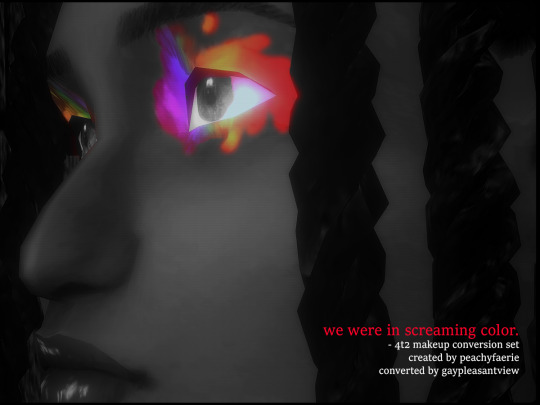

⋆˖⁺‧₊☆ we were in screaming color. // Pride Set #1 ☆₊‧⁺˖⋆
Set includes:
⋆ peachyfaerie's Pride 2022 Collection, converted from TS4
Link, swatch and more info under the cut ♡

Hi people! Happy Pride!!
I thought this could be a good reason for me to finally dust off a bunch of cute WIPs and things I'd been meaning to convert. I think pride flags are joyful reminders of how many sides human identity might have, and this set includes, in my opinion, an incredible variety of flags. I hope it will add something nice to your game :)
Everything is tooltipped, compressed and comes with thumbnails.
Credits: peachyfaerie for all of the textures, @paluding for The Tattooer as usual, this source for the graphics in the post

♡ Download ♡
All of the files are labeled, so you can choose which flags you would like to have in your game.
SFS | Mediafire | simblr.cc
♡ Swatch ♡
Flags included, left to right:
Row 1: lesbian, rainbow (bright & pastel options), bisexual/-romantic (bright & pastel options), transgender, non-binary, intersex, genderfluid
Row 2: genderqueer, agender, gay, sapphic, achillean, polysexual/-romantic (bright & pastel options), demisexual, demiromantic
Row 3: asexual, graysexual, grayromantic, pansexual/-romantic (bright & pastel options), demigirl, demiboy, reciprosexual, reciproromantic
Row 4: cupioromantic, lithosexual, libidoist, polyamorous (two design options), ambiamorous, autosexual
⋆ Individuality Eyeshadow - CU-EU
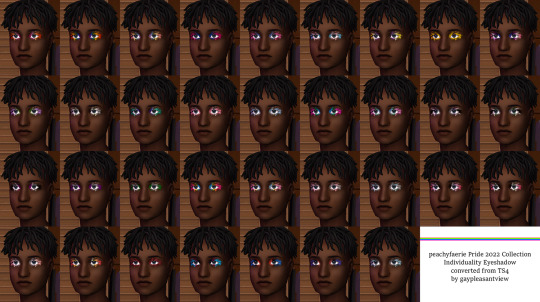
⋆ Truth Highlighter - CU-EU, layerable
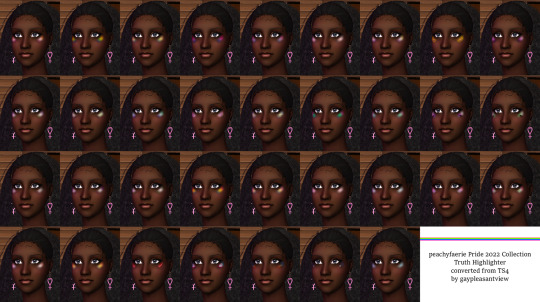
⋆ Unique Eyeliner - CU-EU
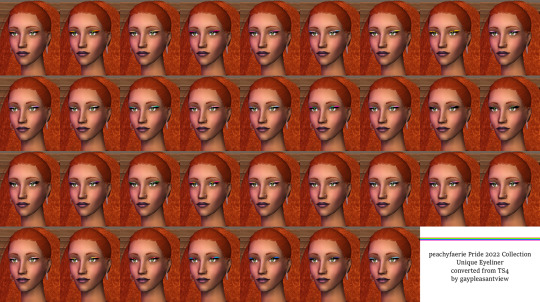
116 notes
·
View notes
Text
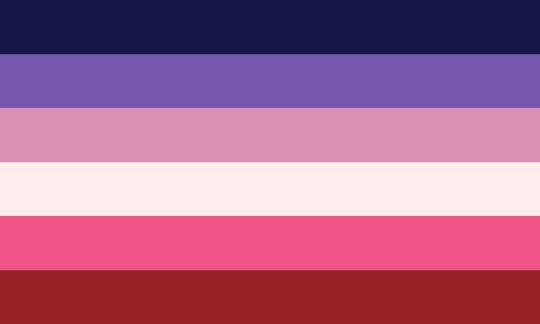
Erosous Ace
An Ace / Acespec person who participates in or enjoys Erosy / Erosous activities, partnerships, etc.
Similar to Non-celibate Ace as a concept but covering everything Erosy includes ( affection, amory, amato-relationships, gamy, practice, acts, sex drive/life, libido, desire, stimulus, erotic love, etc. )
It may be used alongside or in place of other terms which it has overlap with! This may include Sexuace, Libidoist Ace, etc.
Inclusive of both Polyerosous Aces ( Polyeraces ), Monoerosous Aces ( Monoeraces ), and those who are Ambierosous !
( definition given by anon, I also talk a bit about it here )
For the flag I used this Asexual / Asexual spectrum flag by potionflags because it was easier to blend with the pink and red stripes. Those stripes are both inspired by these Polyerosous flags, the Ambierosy flag, and this Erosoplatonic flag!
Taglist - @radiomogai, @revenant-coining
#erosous ace#erosous asexual#erosous acespec#erosous#erosy#asexual#acespec#ace#aspec#mogai pride#liom pride#mogai flag#liom flag#mogaisafe#liomsafe#mogai#liom#mogai friendly#liom friendly
28 notes
·
View notes
Text
any other non-libidoists (ppl who don't experience sexual arousal) out there who feel like, though they're undoubtedly missing out on a lot of the fun of sex, they have a better understanding than most people of the different "layers" of horniness/the Abstract Sexual Mood, or rather a better understanding of the psychological side of sex in its distilled essence, since they can be very much "mentally aroused" without any physical sensations attached to it?
like...i can very much feel mentally turned on and enjoy sex and be in a sexual mood, i can co-create phantasies and play with my partner and be excited and know what to do and what to say and have fun while doing it... it's just that my body doesn't feel any different... and touching my genitals feels the same as touching my knee lol. and i have no fucking idea what an orgasm feels like and probably never will. and it's been a year since i even attempted to masturbate (gave up after a minute lmao).
but i just feel like it would be harder for most people to differentiate these layers (mental vs physical arousal) bc they probably tend to always experience them at the same time? soo...maybe our unique perspective is epistemologically valuable, too? lol
#obviously there are also a lot of ppl who don't enjoy sex at all :)#asexual#ace#nonlibidoist#non-libidoism#asexuality
9 notes
·
View notes
Text
Yes, and: that history post does a good job of confirming that asexual people, or at least the concept of asexuality, is indeed much older than the Internet. It wasn't invented for or by the Internet.
But I always think of two things when I think of that history. One is this: I have been in asexual communities long enough to have met at least half a dozen people who independently invented that concept for themselves to explain their own experiences, generally either with the term "nonsexual" or "asexual." (It's actually a pretty even split.) That I'm not one of them is more a matter of chance than anything else; I encountered the concept of asexuality some time in early 2005, when I was fourteen, so I had the option of considering it as something I might turn out to be pretty early on.
Asexuality, bluntly, is not a hard identity to conceive of. In fact, it's the most natural thing in the world to follow from the medicalizing invention of homosexuality as a condition to heterosexuality in opposition, and then the invention of bisexuality (and, subsequently and with some games of telephone involved, pansexuality) to break up that binary. Before those photos got discovered of people identifying or inviting other people to identify as asexual, there was the 1977 Storms model of sexuality that marked off a whole quadrant for asexuals. So I think of that.
The second thing I think of is: we don't have any evidence that I'm aware of that directly connects the people in those photos to, say, the Haven For the Human Amoeba group that became the modern asexual community. (This is the group that spawned AVEN... and a few other spaces, some of which have now collapsed and some of which are simply small and quiet.)
Are inventions and re-inventions of the same concept in continuity with one another? Is the invention of a sexual orientation the invention of a concept, or is it the development of a tradition, a conversation, a network of humans communicating with one another to build a shared identity? Did Nat Titman (who wrote AVEN's definition of asexuality) inherently shape what it means to be asexual by laying those words down? Would I have been different if the Non-Libidoist society had won early battles over self definition? (They're the reason that the unicorn never became a major community symbol in the English speaking community: they'd claimed it for their very exclusionist vision of what asexuality could or would mean, and it left a bad taste in many mouths.)
Are we the word, or are we the concept, or are we the people?
Because look, when I think of what it means to be queer, I think of rainbows and thrown heels and the grief of pink triangles. I think of the grief of AIDS and how people responded. I think of the defiant joy of dance halls and drag balls, the mad rushes to altars when rights crash down on you like an unexpected but dearly beloved wedding guest.
Some of these things I have lived through. Some I haven't. But they are a litany of the shared touchstones of a community of people flowing through time. They are the touchstones of a community that recognizes its own and is recognized in turn, albeit messily and with more than a little argument.
If you take that definition of the asexual community, we did rise on the Internet—although our brothers and sisters and siblings with roots in bisexual liberation have certainly informed the directions we've traveled along the way. I have been maintaining for decades that the concept of "romantic orientation" in the ace community was sometimes called "affectional orientation" when I was younger, which is the name the concept has in bisexual liberation groups; certainly that was a piece of the background that David Jay brought to AVEN, and Nat Titman, and more than a few others. We didn't come out of nowhere.
But I do think the Internet is what gave us the critical mass that let us find one another to become a community in our own right, not just a theoretical concept. Do you know how much more powerful a definition becomes once two people agree on it, not just one? Without the Internet, we have no community, just a scatter of isolated independent ideas. Perhaps in another universe the community rose up a different way, but in ours, this is where its footprints lead.
I'm okay with that. I don't think we need an origin "farther back." But that's the magic of considering sexual orientation itself as a cultural construct allowing humans to understand sexuality rather than a natural division in its own right: it gives you the freedom to both see your own face in the faces of history, and the freedom to understand how you might shape your own construct better to fit yourself (or humans in general) moving into the future.
A thought I’ve been having: While it's important to recognize the long history of many current queer identities (and the even longer history of people who lived outside of the straight, cis, allo “norm”) I think it's also important to remember that a label or identity doesn't have to be old to be, for lack of a better word, real.
This post that i reblogged a little while ago about asexuality and its history in the LGBTQ+ rights movement and before is really good and really important. As i've thought about it more, though, it makes me wonder why we need to prove that our labels have "always existed." In the case of asexuality, that post is pushing back against exclusionists who say that asexuality was “made up on the internet” and is therefore invalid. The post proves that untrue, which is important, because it takes away a tool for exclusionists.
But aromanticism, a label & community with a lot of overlap & solidarity with asexuality, was not a label that existed during Stonewall and the subsequent movement. It was coined a couple decades ago, on internet forums. While the phrasing is dismissive, it would be technically accurate to say that it was “made up on the internet.” To be very clear, I’m not agreeing with the exclusionists here—I’m aromantic myself. What I’m asking is, why does being a relatively recently coined label make it any less real or valid for people to identify with?
I think this emphasis on historical precedent is what leads to some of the attempts to label historical figures with modern terminology. If we can say someone who lived 100 or 1000 years ago was gay, or nonbinary, or asexual, or whatever, then that grants the identity legitimacy. but that's not the terminology they would have used then, and we have no way of knowing how, or if, any historical person's experiences would fit into modern terminology.
There's an element of "the map is not the territory" here, you know? Like this really good post says, labels are social technologies. There's a tendency in the modern Western queer community to act like in the last few decades the "truth" about how genders and orientations work has become more widespread and accepted. But that leaves out all the cultures, both historical and modern, that use a model of gender and sexuality that doesn't map neatly to LGBTQ+ identities but is nonetheless far more nuanced than "there are two genders, man and woman, and everyone is allo and straight." Those systems aren’t any more or less “true” than the system of gay/bi/pan/etc and straight, cis and trans, aro/ace and allo.
I guess what I’m saying is, and please bear with me here, “gay” people have not always existed. “Nonbinary” people have not always existed. “Asexual” people have not always existed. But people who fell in love with and had sex with others of the same gender have always existed. People who would not have identified themselves as either men or women have always existed. People who didn’t prioritize sex (and/or romance) as important parts of their lives have always existed. In the grand scheme of human existence, all our labels are new, and that’s okay. In another hundred or thousand years we’ll have completely different ways of thinking about gender and sexuality, and that’ll be okay too. Our labels can still be meaningful to us and our experiences right now, and that makes them real and important no matter how new they are.
We have a history, and we should not let it be erased. But we don’t need a history for our experiences and ways of describing ourselves to be real, right now.
437 notes
·
View notes
Text
What's the difference between sexual attraction and psuedosexual attraction if you don't really want to engage in partnered sexual activity either way? /gq
I think I may be either psuedosexual or orchidsexual, but I'm unsure of which one fits better.
Up until recently I'd assumed that I was stereotypically aroace, but upon meeting one individual woman I experienced sexual arousal for the first time. I was previously a non-libidoist prior to making her acquaintance.
Sometimes I fantasize about various forms of fornication with this one particular woman, but I do not think the idea of actually persuing said fantasies is for me...
Do the actions taken in regards to said arousal make a difference?
1 note
·
View note
Note
CW: includes topics of s*x and ma*tur*ation
-
-
-
-
-
So not long after I started hormones, I wasn’t really interested in sex anymore. My libido has shot WAY down and it wasn’t even that high before.
It’s come up a little bit recently, but I’ve noticed that I much prefer to use my *ahem* toys..rather than intercourse with my partner now.
My ultimate question is if there’s an identity that fits this?
Fluxo or non-libidoist? Autosexual/autoerotic or solosexual? Esthesiosexual or juxtasexual? Feel free to add -flux or -flexible with the prefixes.
#anon#mature tag#esthesiosexual#autosexual#autoerotic#juxtasexual#solosexual#nonlibidoist#non-libidoist#fluxolibidoist#imoga#hormones#libido#libidinous#sexuality#tw#cw
2 notes
·
View notes
Text
Non-Libidoist
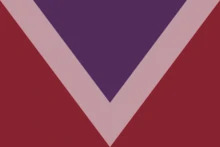
Non-Libidoist is a term to refer to people without an active sex drive (libido), and one who does not experience sexual urges or desires, regardless of orientation. They typically do not masturbate, have sexual relationships, or participate in sexual acts, as they have no desire to do so. The term is often used by asexual people as a large percentage of asexual people are non-libidoists, though non-libidoist is not synonymous with asexual. Some asexual people may still have a sex drive (libidoist), though they do not feel sexual attraction. Additionally some allosexual people may be non-libidoists.
8 notes
·
View notes
Text
Asexuality and Sex Education
A big goal of mine is to make the sex ed I teach to be inclusive towards people who are asexual or anywhere in that spectrum, as well as people who have no interest in ever having sex or don’t experience having a sex drive. Of course part of that is just the education that defines these things and makes sure people are aware that asexuality doesn’t necessarily mean no sex drive, or that people who don’t want sex automatically don’t experience attraction. There are curricula out there that do make sure to go that far. However, it feels like when talking about everything else involved in sex education people get left out. I get asked the question “Well if they’re asexual, why do they even need sex education?”
First off, it’s important to realize that sex education includes:
Forming Values
Healthy Relationships
Communication
Consent
Safer Sex
Intimacy
Self Esteem
Sexual Behavior
and much more
So I’m asking the question now:
Dear those who are asexual, demisexual, grey-a, sex repulsed, non-libidoist, both those who have sex and those that don’t;
What do you wish that you could have gotten as far as sexuality education in all its forms when you were a teenager? What do you wish other people would know about you and others like you?
#asexuality#demisexuality#grey-a#non-libidoist#sex repulsed#sex ed#sexuality education#sex drive#relationships#consent#self esteem
119 notes
·
View notes
Text
I once saw people without sex drive getting referred to as non-libidoists. As an ace without sex drive, I must say I loved that and still do. To me it feels like that describes me even better than saying I'm ace.
Aces without sex drives are also valid!!!
I keep seeing posts specifically saying “aces still have sex drives/participate in sexual activities too!!!” but based on like every census survey I’ve seen most aces are sex-repulsed. And it’s very very harmful to those aces if you basically tell people that they SHOULD still have a sex drive or that they’re technically still able to enjoy sex without also mentioning MANY of us don’t and can’t and don’t want to, and we’re valid too.
67 notes
·
View notes
Text
Welcome to Aspec Pride Calendar!
Calendar Updated 6/27/22: The only change is 6/30 (originally "Loveless, lovepunk, & lovequeer") being split into two days. 6/30's theme is now "Loveless aromantic," and 7/1 will be "Lovepunk" (with several other terms listed as similar/related).
I created this blog to celebrate aspec identites and experiences during Pride Month. We're too often left out of other celebrations, especially arospecs, and even apart from that, we just deserve to be celebrated! I'll be posting a celebratory post each day for the day's identity/identities along with flags and definitions as well as likely reblogging other posts related to those identities. I also encourage you to participate by creating posts celebrating those identies. Anything goes - original content like stories, poems, personal posts, crafts and fan content like fic, art, headcanons, recs, edits - and anything not listed! Just tag the blog @aspecpridecalendar and/or mention it in the tags, and I'll reblog your contributions.
Because I unfortunately didn't get this idea until later in the month, the event will start tomorrow (June 9th) and run through the end of the month. If there's interest, when we come back next year, we'll do the whole month and include even more identities! :) Without further ado, here's the calendar itself (click for larger size and better quality, and please let me know if there are any flag errors):
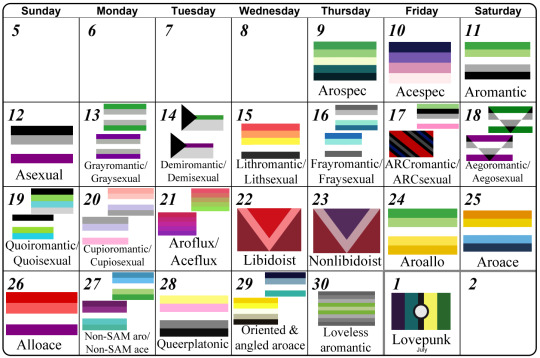
(ID: a calender showing the last four weeks in June. Each day is labeled with the identities below and the matching pride flags.)
9th - Arospec / aromantic spectrum 10th - Acespec / asexual spectrum 11th - Aromantic 12th - Asexual 13th - Grayromantic / graysexual 14th - Demiromantic / demisexual 15th - Lithromantic / lithsexual 16th - Frayromantic / fraysexual 17th - ARCromantic / ARCsexual (averse, repulsed, or conflicted) 18th - Aegoromantic / aegosexual 19th - Quoiromantic / quoisexual 20th - Cupioromantic / cupiosexual 21st - Aroflux / aceflux 22nd - Libidoist 23rd - Nonlibidoist 24th - Aroallo / aromantic allosexual 25th - Aroace / aromantic asexual 26th - Alloace / alloromantic asexual 27th - Non-SAM aro / non-SAM ace 28th - Queerplatonic 29th - Oriented aroace / angled aroace 30th - Loveless aromantic 1st - Lovepunk
109 notes
·
View notes
Note
Hello, hope you are well
I've been reading your (at time of writing) most recent post regarding the sunset aroace flag. Thanks for making it first off, it's really important to raise
Nonetheless, I'm messaging because i wanted to ask what you're referring to with asexual elitism. There's absolutely no obligation to reply or expend energy explaining this to me, but you write as though its an established thing, so I've clearly missed something. I've done some research, but I can't find anything particularly recent, and I am unsure as to how what I have found relates to the sunset flag, so I'm not sure if I'm on the wrong track entirely or if I'm just missing the connection?
Again, no obligation to reply and I'm sorry if this causes offence or isn't something you want to answer.
Hi anon! Thank you for reading my post, and sorry for the delayed response to your ask; I wanted to makes sure to give it the time and attention it deserves.
For the tl;dr inclined among us, "asexual elitism" is a construction of a hierarchy among aces based on the person's proximity to normative romantic/sexual relationships, with the type of people being referenced with the "sunset" flag at the top of the heap and classes below variously including sex-favorable aces, aces who have or have had sex, "libidoists" and/or people who masturbate, non-aromantic aces, and most especially gray-aces particularly demis. These beliefs typically originated in a resentment of and/or disdain for sex (and by extension non-asexual people) as base, animalistic, dirty, etc.; aces who were not like them were "tainted" by this baseness as well. The outcome of such attitudes could range from unconscious expressions of derision towards those aces they considered to be "less than" to full-on exclusionary and gatekeeping behavior.
I'm not particularly surprised you weren't able to find any recent sources, though, because the main time period of this conflict was in fact quite a while ago, reaching its apex in the latter half of the 2000s. That's why I framed it in the context of community memory; it was an active problem with an active reaction (directly pushing back and/or creating explicitly non-elitist communities) that has been essentially eclipsed by other concerns, both internal and external, that popped up in the 2010s. However, I agree with Talia in their 2012/2013 essay "Asexual Elitism is Alive and Well"** that while we did a pretty good job against overt elitism, there remained a passive (or, as they say, "hidden") strain that persisted. The fracturing of the community and consequential lack of strong community norms has, I believe, led to the situation we see now where people are reproducing these beliefs with little critical examination.
I think it's relevant to bring up specifically asexual elitism and not a more modern alternative like "exclusionist" or "gatekeeper" to include that behavior that doesn't necessarily rise to the level of saying "this person is not a 'true' asexual" and remind people of how destructive it can be and has been in the past. Especially because I also see an pattern of people recently taking stock of all we've lost to harassment from outside our community but concluding that all of our ills are their fault. While I certainly would assign them the blame, it's prudent for us to recognize the ways the lingering effects of elitism and its ilk shaped our reaction and rhetoric.
Hopefully that is a helpful explanation! But if not, I am happy to clarify. Thank you for the question!
**BTW, as a little but of trivia, I believe this is the essay that finally coined the term "sex-favorable." If you want to read the AVEN thread Talia references in the piece, it's here. In googling it for the link I also came across this contemporaneous reaction as well.
7 notes
·
View notes
Text
The LGBTQIA+ Community (っ◔◡◔)っ ❤
Okay hiii. So I know I’ve been obsessively reblogging things lately (please- I’m going to stop doing it I promise.) This post is going to be about the LGBTQIA+ community and the *sexualities* (there will be following posts about gender terms, and other terms for the LGBTQIA+ community)
~𝖘𝖊𝖝𝖚𝖆𝖑𝖎𝖙𝖎𝖊𝖘~ - Allosexual {to describe those who experience sexual attraction.} - Androsexual {A term used to communicate sexual or romantic attraction to men, males, or masculinity} - Asexual {individuals who don’t experience sexual attraction (they refer to themselves as “aces”)} - Aromantic {romantic orientation that describes people who experience little to no romantic attraction.} - Autosexual {a person who is attracted to themselves. (if you masturbate, that does not mean you are autosexual LMAO)} - Autoromantic {romantic orientation for those romantically attracted to themselves.} - Bicurious {for those that are questioning bisexuality} - Bisexual {sexuality for those who experience sexual, emotional, or romantic attraction to people of more than one gender} - Biromantic {romantic orientation for those that feel romantically attracted to people of more than one gender} - Cupiosexual {for those that do not experience sexual attraction but want to engage in sexual activities} - Demisexual {for those that only experience attraction after building an emotional or romantic relationship with a person} - Demiromantic {romantic orientation for those who experience romantic attraction only after building an emotional relationship with someone} - Gay {for those who experience sexual, romantic or emotional attraction to a person of the same gender.} - Graysexual {acknowledge the gray area on the sexuality spectrum for those who don’t explicitly identify as asexual or aromantic. Some graysexual’s do experience sexual attraction.} - Grayromantic {a romantic orientation that describes individuals whose romantic attraction exists in the gray area between romantic and aromantic} - Gynesexual {a term to describe the attraction to women, females or femininity.} - Heterosexual {you’re straight. that’s it. you like the opposite gender. boom.} - Lesbian {a women who experiences sexual attraction to other women (and ONLY WOMEN)} - Libidoist asexual {a term to describe an asexual person who experiences sexual feelings that are dealt with through masturbation or self-stimulation.} - Monosexual {includes those who experience romantic or sexual attraction to one gender.} - Non-libidoist asexual {a person who does not have any sexual desires or attraction, or an active sex-drive.} - Omnisexual {simiar to pansexual; people whose sexuality isn’t limited to people of a particular gender, sex, or sexual orientation.} - Pansexual {orientation that describes sexual, romantic or emotional attraction to any person, regardless of gender, sex, or sexual orientation.} - Panromantic {romantic orientation for those that experience romantic or emotional attraction (but not sexual) to any person, regardless of gender, sex, or sexual orientation.} - Polysexual {a term that describes individuals with a sexual orientation that involves sexual or romantic attraction to people with varying genders} - Pomosexual {a term to describe those who reject sexuality labels or do not identify with them} - Sapiosexual {for those that experience attraction through intelligence, rather than sex or gender} - Skoliosexual (those who experience sexual or romantic attraction exclusively towards non-binary, transgender or genderqueer people.} - Spectrasexual {a term that describes people who are sexually or romantically attracted to multiple and varied sexes, genders and sexual orientations, but not necessarily all or any.}
If you have any questions, throw a comment my way/send me a DM!
16 notes
·
View notes
Text
Wow! You're non-binary that's so cool!
Wow! You're bisexual that's so cool!
Wow! You're pansexual that's so cool!
Wow! You're asexual that's so cool!
Wow! You're demisexual that's so cool!
Wow! You're allowsexual that's so cool!
Wow! You're androsexual that's so cool!
Wow! You're aromantic that's so cool!
Wow! You're bi-curious that's so cool!
Wow! You're bi-romantic that's so cool!
Wow! You're cupiosexual that's so cool!
Wow! You're demi-romantic that's so cool!
Wow! You're fluid that's so cool!
Wow! You're gay that's so cool!
Wow! You're gray-sexual that's so cool!
Wow! You're gray-romantic that's so cool!
Wow! You're gynesexual that's so cool!
Wow! You're heterosexual that's so cool!
Wow! You're a lesbian that's so cool!
Wow! You're libidoist asexual that's so cool!
Wow! You're monosexual that's so cool!
Wow! You're non-libidoist sexual that's so cool!
Wow! You're omnisexual that's so cool!
Wow! You're panromantic that's so cool!
Wow! You're polysexual that's so cool!
Wow! You're pomosexual that's so cool!
Wow! You're queer that's so cool!
Wow! You're skoliosexual that's so cool!
Wow! You're spectrasexual, that's so cool!
Wow! You use she/ her pronouns, that's so cool!
Wow! You use they/them pronouns, that's so cool!
Wow! You use any pronouns, that's so cool!
Wow! You use he/him pronouns that's so cool!
Wow! You use he/they pronouns that's so cool!
Wow! You use she/they pronouns that's so cool!
If you are just trying to figure yourself out and not feel pressured by the hundred different ways out society is going right now, that's so cool
If you identify as any of these and you come across my blog, I want you to know that you are cool, you matter, and you are totally 100% VALID. If you identify as any of these and you have been ridiculed for identifying yourself as such in anyway, I'm sorry and this blog will always be a safe space for you.
No homophobia will be allowed on my blog at any time, no matter what your stance on it may be. Just wanted to make sure this was clear.
8 notes
·
View notes
Photo
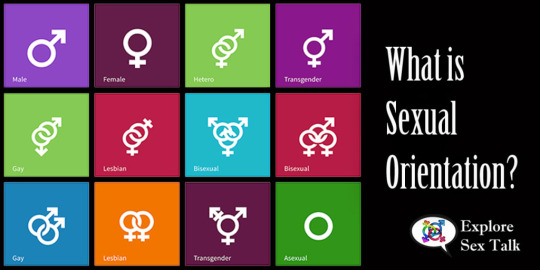
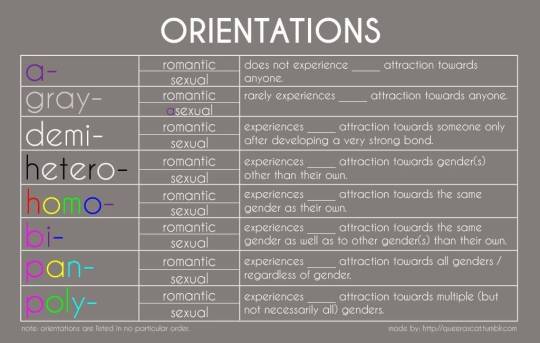
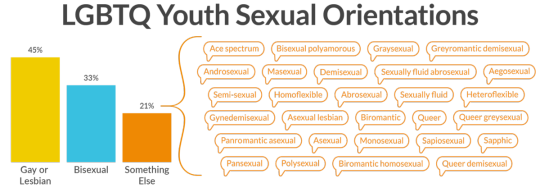
Why does it matter?
Sexuality has to do with the way you identify, how you experience sexual and romantic attraction (if you do), and your interest in and preferences around sexual and romantic relationships and behavior.
Who your sexual or romantic partner is at a given moment in time doesn’t necessarily define this part of who you are. Sexuality can be fluid — changing in different situations for some, and over the years for others.
Observing patterns in sexual and romantic attraction, behavior, and preferences over time is one way to better understand your sexual identity or romantic orientation.
Familiarizing yourself with language that describes different types of sexual and romantic feelings and orientations will help you, your partners, and your friends navigate and understand the many ways people experience and identify their sexuality.
The bottom line
It’s okay to feel unsure or overwhelmed by all of the labels we now have to describe sexual and romantic orientation, attraction, and behavior.
Expanding the language you use to describe your sexuality can provide important guidance, validation, and access to community while on your journey of sexual self-discovery and satisfaction.
Allosexual
A word and category describing those who experience sexual attraction. Use of this term helps to normalize the experience of being asexual and provides a more specific label to describe those who aren’t part of the asexual community.
Allosexism
This refers to norms, stereotypes, and practices in society that operate under the assumption that all human beings experience, or should experience, sexual attraction.
Allosexism grants privilege to those who experience attraction and leads to prejudice against and erasure of asexual people.
Androsexual
A term used to communicate sexual or romantic attraction to men, males, or masculinity. This term intentionally includes attraction to those who identify as men, male, or masculine, regardless of biology, anatomy, or sex assigned at birth.
Asexual
Asexual identity or orientation includes individuals who don’t experience sexual attraction to others of any gender.
Also referred to as “aces,” some people who are asexual do experience romantic attraction to people of one or multiple genders.
Aromantic
A romantic orientation the describes people who experience little or no romantic attraction, regardless of sex or gender.
Autosexual
A person who’s sexually attracted to themselves. Someone’s desire to engage in sexual behavior such as masturbation doesn’t determine whether they’re autosexual.
Autoromatic
A romantic orientation that describes a person who’s romantically attracted to themselves. Those who identify as autoromatic often report experiencing the relationship they have with themselves as romantic.
Bicurious
This refers to people who are questioning or exploring bisexuality, which typically includes curiosity about one’s romantic or sexual attraction to people of the same or different genders.
Bisexual
A sexual orientation that describes those who experience sexual, romantic, or emotional attractions to people of more than one gender.
Also referred to as “bi,” bisexual typically includes individuals who are attracted to a variety of people, with genders that are similar to and different than their own.
Biromantic
Those who experience romantic attraction, but not sexual attraction, to individuals of more than one gender.
Closeted
Closeted, also referred to as “in the closet,” describes people in the LGBTQIA+ community who don’t publicly or openly share their sexual identity, sexual attraction, sexual behavior, gender expression, or gender identity.
Closeted is often understood as the opposite of “out,” and refers to the metaphorical hidden or private place a LBGTQIA+ person comes from in the process of making decisions about disclosing gender and sexuality.
Some individuals may be out in certain communities but closeted in others, due to fear of discrimination, mistreatment, rejection, or violence.
Coming out
A phrase that refers to the process of being open about one’s sexuality and gender. For many LGBTQIA+ people, “coming out” isn’t a one-time event, but a process and series of moments and conversations.
Also described as coming out of the closet, this process can include:
sharing about a same-gender or similar gender sexual or romantic attraction or experience
identifying as LGBTQIA+
disclosing one’s specific gender identity, gender expression, or sexual or romantic orientation
Some LGBTQIA+ people decide to keep their sexuality, gender, or intersex status private, while others decide to share these things with loved ones, acquaintances, or the public.
The process of coming out or the state of being out is a source of self-acceptance and pride for many (but not all) LGBTQIA+ individuals.
However, it’s important to remember that each person’s coming out experience is different, and the act of coming out can be hard and emotional.
The decision to come out is deeply personal. Each person should make decisions about disclosing sexuality and gender in their own time and manner.
Cupiosexual
Cupiosexual describes asexual people who don’t experience sexual attraction but still have the desire to engage in sexual behavior or a sexual relationship.
Demisexual
On the asexual spectrum, this sexual orientation describes individuals who experience sexual attraction only under specific circumstances, such as after building a romantic or emotional relationship with a person.
Demiromantic
This romantic orientation describes individuals who experience romantic attraction only under specific circumstances, such as after building an emotional relationship with a person.
Fluid
This terms refers to the fact that sexuality, sexual attraction, and sexual behavior can change over time and be dependent on the situation.
It’s used to describe those who experience shifts in their sexuality, sexual attraction, or sexual behavior in different situations or throughout the course of their lifetime. You may hear someone describe their sexuality as “fluid.”
Gay
A term that describes individuals who experience sexual, romantic, or emotional attraction to people of the same or a similar gender.
Some gay-identified women prefer the term lesbian, while others prefer queer or gay. It’s also best to ask which word or term someone uses to describe themselves.
The fields of medicine and psychology previously referred to this sexual orientation as homosexual. Homosexual is now viewed as an outdated and offensive term and shouldn’t be used to refer to LGBTQIA+ individuals.
Graysexual
Graysexual is a term used to acknowledge the gray area on the sexuality spectrum for people who don’t explicitly and exclusively identify as asexual or aromantic.
Many people who identify as graysexual do experience some sexual attraction or desire, but perhaps not at the same level or frequency as those who identify their sexuality as being completely outside of the asexual spectrum.
Grayromantic
A romantic orientation that describes individuals whose romantic attraction exists in the gray area between romantic and aromantic.
Many people who identify as grayromantic do experience some romantic attraction, but perhaps not at the same level or frequency as those who identify their sexuality or romantic orientation as something other than asexual.
Gynesexual
A term used to communicate sexual or romantic attraction to women, females, or femininity.
This term intentionally includes attraction to those who identify as women, female, or feminine, regardless of biology, anatomy, or the sex assigned at birth.
Heterosexual
A term that describes people who experience sexual, romantic, or emotional attraction to people of the “opposite” gender (e.g. male vs. female, man vs. woman) or a different gender.
Both cisgender and transgender identified people can be heterosexual. This sexual orientation category is commonly described as straight.
Homosexual
An outdated term rooted in the fields of medicine and psychology that refers to individuals who experience sexual, romantic, or emotional attraction to people of the same or a similar gender.
Lesbian
A woman or female-identified person who experiences sexual, romantic, or emotional attraction to people of the same or a similar gender.
Some women who are lesbians may also refer to themselves as gay or queer, while others prefer the label lesbian.
LGBTQIA+
The acronym that often describes individuals who don’t identify as exclusively heterosexual or exclusively cisgender.
The letters in the LGBTQIA+ acronym stand for lesbian, gay, bisexual, transgender, queer or questioning, intersex, and asexual.
The + symbol in LGBTQIA+ refers to the fact that there are many sexual orientations and gender identities that are part of the broader LGBTQIA community, but aren’t included as part of the acronym.
Libidoist asexual
A term used to describe an asexual person who experiences sexual feelings that are satisfied through self-stimulation or masturbation.
This label acknowledges that, for some people, acting on libido or sexual feelings doesn’t necessarily involve sexual behavior with others.
Monosexual
A broad sexual orientation category that includes people who experience romantic or sexual attraction to people of one sex or gender. Monosexuality typically includes those who are exclusively heterosexual, gay, or lesbian.
Non-libidoist asexual
Referring to an identity on the asexuality spectrum, a non-libidoist asexual is someone who doesn’t experience any sexual feelings or have an active sex drive.
Omnisexual
Omnisexual is similar to pansexual and can be used to describe individuals whose sexuality isn’t limited to people of a particular gender, sex, or sexual orientation.
Pansexual
A term that describes individuals who can experience sexual, romantic, or emotional attraction to any person, regardless of that person’s gender, sex, or sexuality.
Panromantic
A term that describes individuals who can experience romantic, or emotional (but not sexual) attraction to any person, regardless of that person’s gender, sex, or sexuality.
Polysexual
A term that describes individuals with a sexual orientation that involves sexual or romantic attraction to people with varying genders. Polysexual orientations include bisexuality, pansexuality, omnisexuality, and queer, among many others.
Pomosexual
A term (not necessarily an identity) used to refer to those who reject sexuality labels or don’t identify with any of them.
Passing
Passing refers to society’s perceptions and assumptions of someone’s sexuality or gender.
Specifically, this term is most commonly used to discuss the frequency and extent to which an LGBTQIA+ person is perceived as or assumed to be straight or cisgender.
It’s important to note that some LGBTQIA+ people have the desire to pass while others do not. In fact, the act of being perceived as straight or cisgender can be a source of discomfort and discrimination for some in the LGBTQIA+ community.
Queer
An umbrella term that describes individuals who aren’t exclusively heterosexual. The term queer (the Q in LBGTQIA+), acknowledges that sexuality is a spectrum as opposed to a collection of independent and mutually exclusive categories.
Use of the word queer opens up options beyond lesbian, gay, and bisexual to individuals who don’t fit neatly into these categories or prefer a category that isn’t dependent on sex and gender.
While this term once had negative and derogatory connotations, queer has resurfaced as a common and socially acceptable way for LGBTQIA+ individuals to refer to themselves and their community.
Despite its growing use, some people still have negative associations with the word queer and don’t like to be referred to in this way. Queer, like all terms describing sexuality, should be used sensitively and respectfully.
Questioning
The process of being curious about or exploring some aspect of sexuality or gender. Questioning can also be used as an adjective to describe someone who’s currently exploring their sexuality or gender.
Romantic attraction
The experience of having an emotional response that results in the desire for a romantic, but not necessarily sexual, relationship or interaction with another person or oneself.
Some people experience romantic attraction but don’t experience sexual attraction.
Romantic orientation
Romantic orientation is an aspect of self and identity that involves:
how you identify
the way you experience romantic desire (if you do)
the gender(s) or sex(es) of the people who someone engages in romantic relationships with (if any)
the gender(s) or sex(es) of the people someone is romantically attracted to (if any)
Sapiosexual
A word used to describe those who experience attraction based on intelligence, rather than sex or gender.
Sexual attraction
Sexual attraction refers to experiencing sexual desire or arousal in relation to another person or group of people.
Sex-averse
Sex-averse describes those who are asexual and are averse to or extremely disinterested in sex or sexual behavior.
Sex-favorable
On the spectrum of asexuality, sex-favorable is viewed as the “opposite” of sex-repulsed and describes those who are asexual, and in certain situations can have favorable or positive feelings toward sex.
Sex-indifferent
Sex-indifferent describes those who are asexual and feel indifferent or neutral about sex or sexual behavior.
Sexual orientation or sexuality
Sexual orientation or sexuality is an aspect of self that involves:
how you identify
the way you experience sexual or romantic desire (if you do)
the gender(s) or sex(es) of the people who someone engages in sexual or romantic activity with (if any)
the gender(s) or sex(es) of the people someone is attracted to (if any)
Sexuality can change over the course of someone’s life and in different situations. It’s understood to be a spectrum instead of a series of mutually exclusive categories.
Sex-repulsed
Similar to sex-averse, sex-repulsed is on the spectrum of asexuality and describes those who are asexual and are repulsed by or extremely disinterested in sex or sexual behavior.
Skoliosexual
A sexual orientation that describes those who are sexually attracted to people with non-cisgender gender identities, such as people who are nonbinary, genderqueer, or trans.
Spectrasexual
A term that describes people who are sexually or romantically attracted to multiple or varied sexes, genders, and gender identities — but not necessarily all or any.
Straight
Also known as heterosexual, straight describes people who experience sexual, romantic, or emotional attraction to individuals of the “opposite” gender (e.g. male vs. female, man vs. woman) or a different gender.
People who identify as cisgender and transgender can be straight.
4 notes
·
View notes